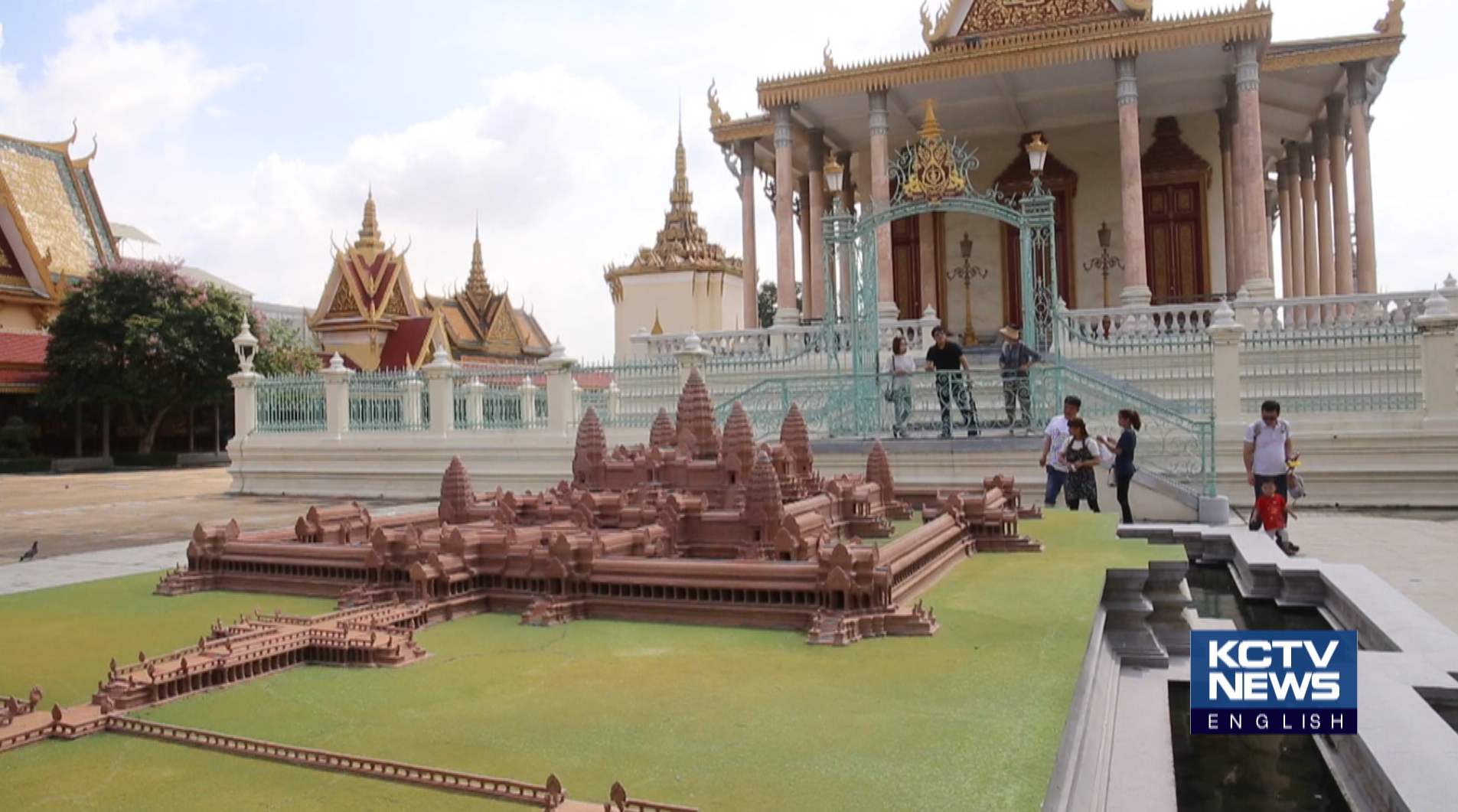
Four selected multicultural families from the island recently took part in a KCTV project. They visited the wives’ families in Cambodia. Their Korean husbands say the trip helped them learn more about the country, its culture, and its history. Kim Minhoe reports.
Report
[slug]
Phnom Penh, Cambodia
Despite the 40-degree heat, Phnom Penh’s Royal Palace is crowded with tourists from all over the world.
[slug]
Royal Palace, Phnom Penh - residence of the King of Cambodia
The Royal Palace, which sits on a 170,000 square meter parcel of land, is a complex of buildings which serve as the royal residence of the King of Cambodia.
The palace was constructed after King Norodom relocated the royal capital from Oudong to Phnom Penh in the mid-19th century.
The buildings employ the traditional Khmer artistic style.
Cambodia has some economic troubles, but these Cambodian mothers are happy to show their homeland’s great history and culture to their kids for the first time.
INTERVIEW
Yongdet / Jocheon-eup, Jeju City
I’m really happy to be here with my children. I’m teaching them about Cambodian culture. They like this place so much.
[인터뷰 용뎃 / 제주시 조천읍 ]
"애들과 같이 와서 좋은 추억도 만들고 저희(캄보디아) 문화에 대해서 애들에게 알려주고..애들이 저보다 더 좋아해요."
[slug]
Tuol Sleng Genocide Museum: infamous Khmer Rouge prison
The Tuol Sleng Genocide Museum was a high school before being transformed into notorious Security Prison 21 by the Khmer Rouge from 1975 to 1979.
Most of the victims included soldiers, government officials, and factory workers, as well as academics, like doctors, teachers, students, monks, and engineers.
Prisoners were repeatedly tortured and coerced into naming family members and close associates, who were in turn arrested, tortured, and killed. Roughly 17,000 people were executed at Tuol Sleng alone for not supporting the communist regime.
Now, after being converted into a museum, visitors can see old razor wire, shackles, and pictures of the genocide’s thousands of victims on display.
[slug]
Khmer Rouge Killing Fields
The Choeung Ek Monument is filled with more than 5,000 human skulls - many of which are shattered or smashed - grim reminders of the cruelty imposed by the Khmer Rouge.
[slug]
The Killing Fields: Pol Pot’s regime executed over 1m people
This is a killing tree, used as a tool by executioners to kill. Excavations and studies of the area revealed 170 bodies buried around the tree - most of them children and women.
Visitors to the site become visibly shocked when they learn that about one fourth of the Cambodian population was killed without good reason by the genocidal tyrant, Pol Pot.
INTERVIEW
Matilda / Visitor from Norway
Cambodian history is interesting, but at the same time, tragic. I wonder what exactly happened in the past.
[인터뷰 마틸다 / 관광객 (노르웨이) ]
"캄보디아 역사는 너무 슬프면서도 흥미롭습니다. 과거 어떤 일이 벌어졌는지 매우 궁금합니다."
The Cambodian ladies and their families are much closer after they have taken a tour of the nation’s glorious, yet tragic, past.
INTERVIEW
Gang Jae-yeon / Ildo-dong, Jeju City
I learned about the painful history of Cambodia and I realized that my wife’s people experienced a tragedy similar to that of the Korean people.
[인터뷰 강재연 / 제주시 일도동 ]
"여기와서 직접보니까 옛날에 있었던 아픔을 느낄 수 있고 제 와이프도 저희와 비슷한 아픔을 겪었다는 것을 이번 여행으로 알 수 있었습니다."
[Reporter] Kim Minhoe
[Camera] Ko Moon-su
This multicultural family home country visit project is designed to help immigrant women settle down on Jeju. It gives families a chance to better understand each other's culture and history, which strengthens family ties.
Kim Minhoe, KCTV





